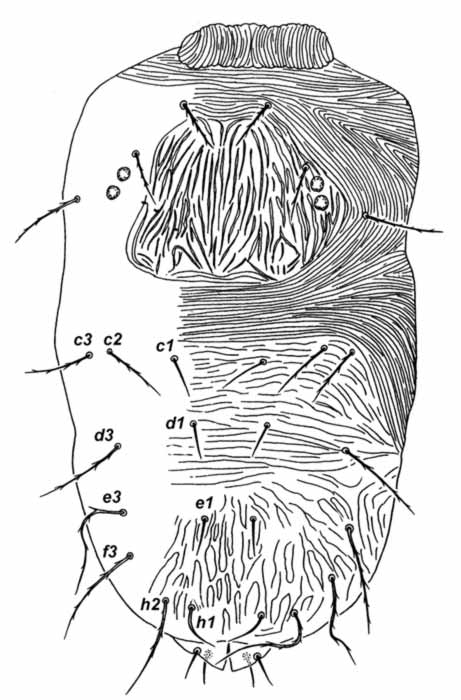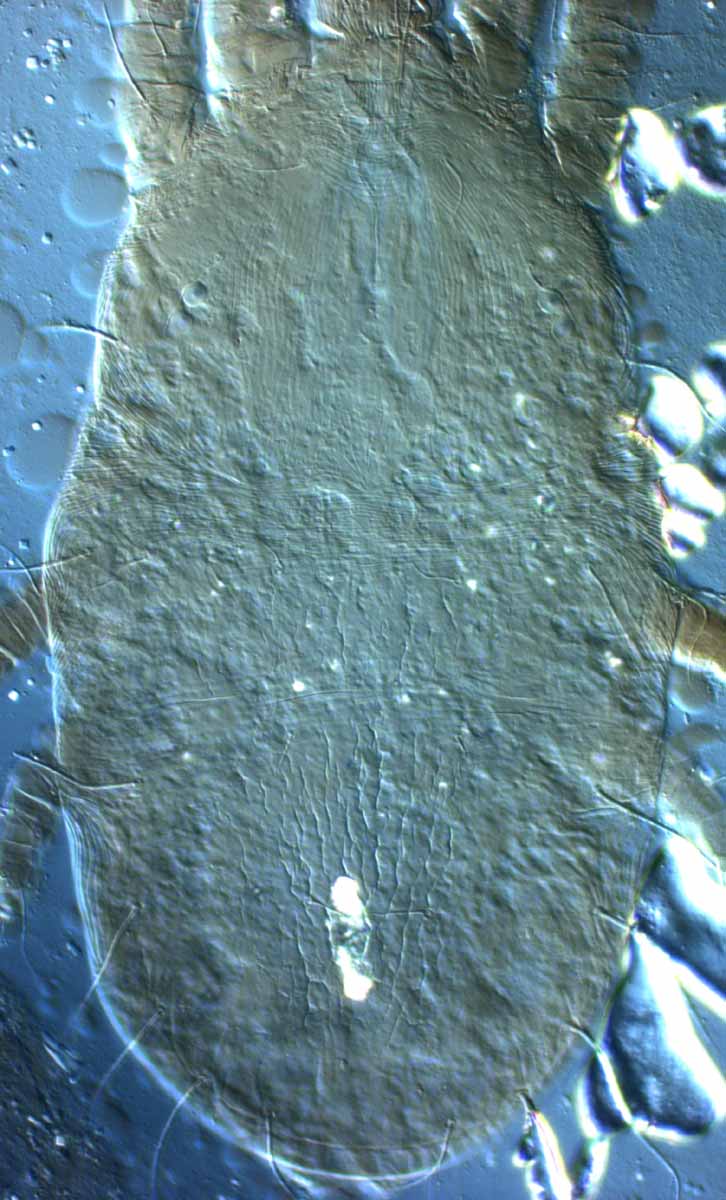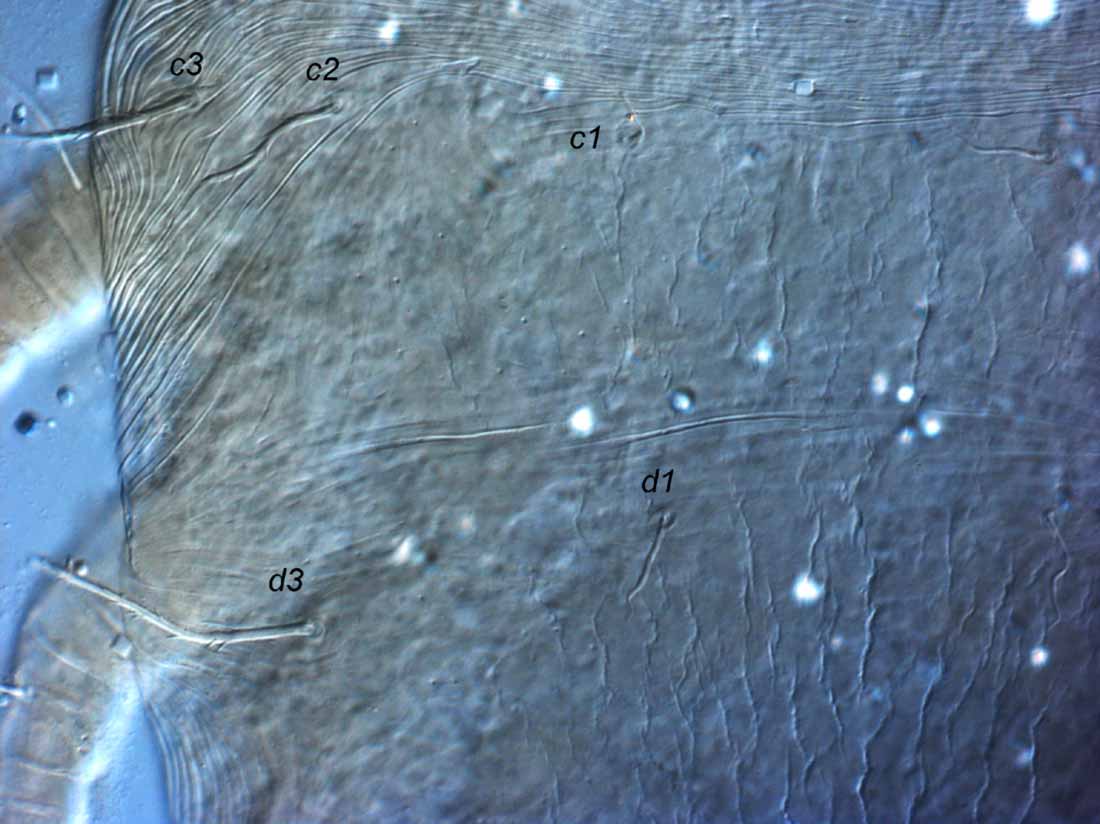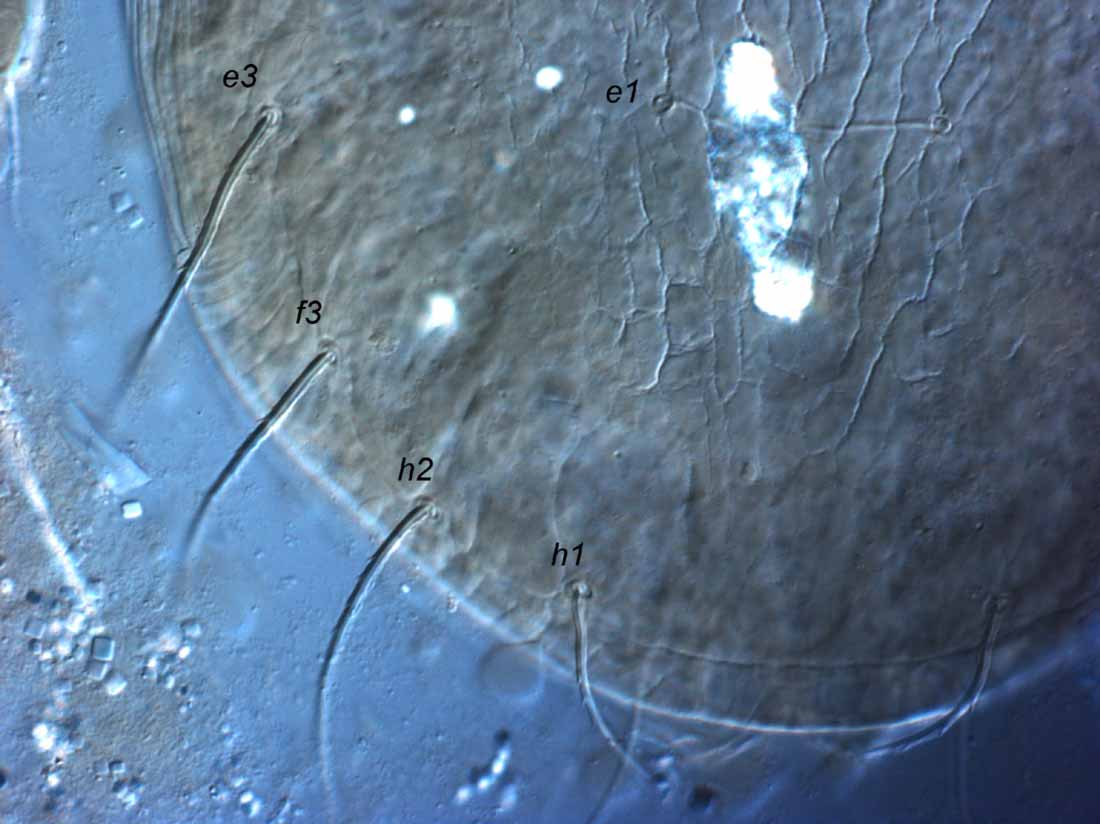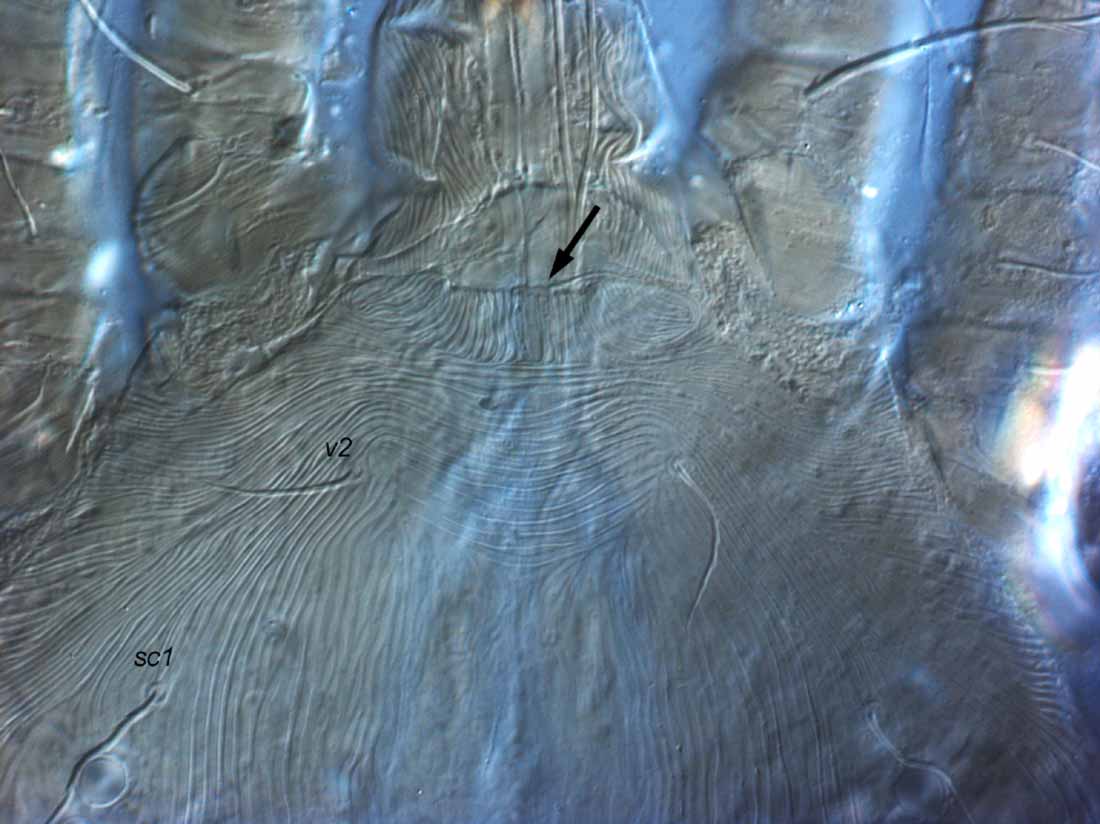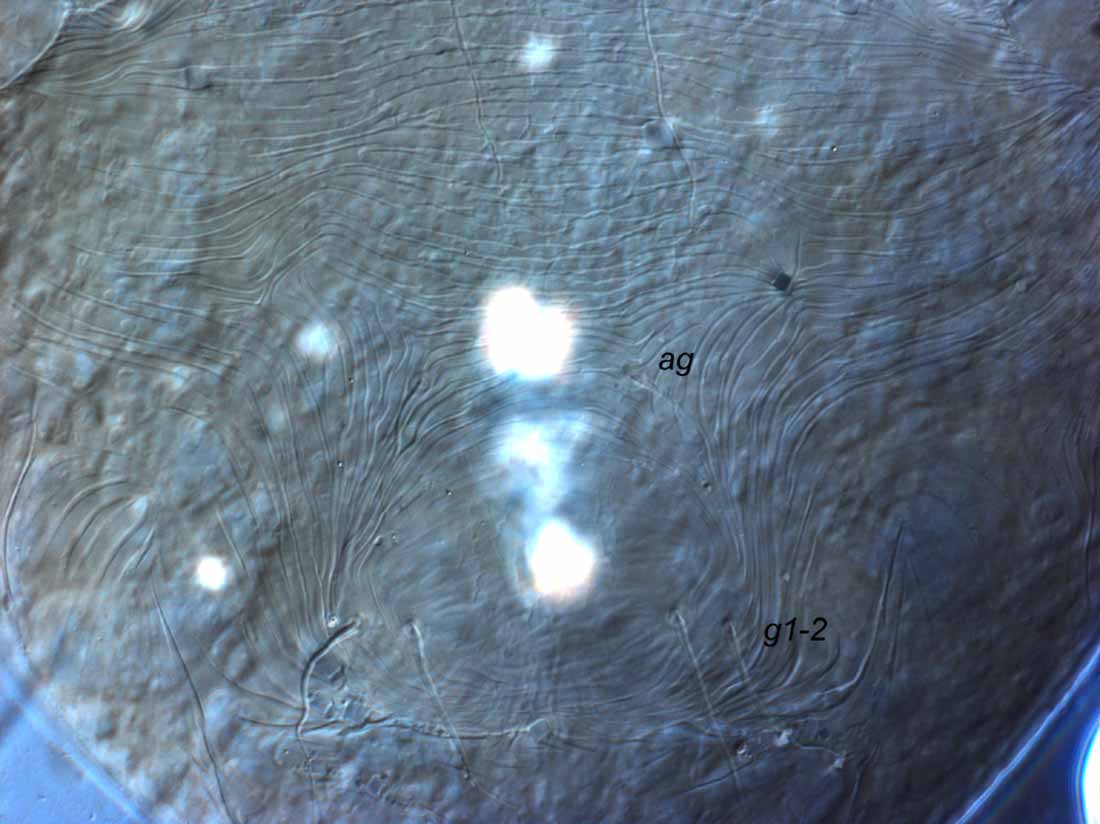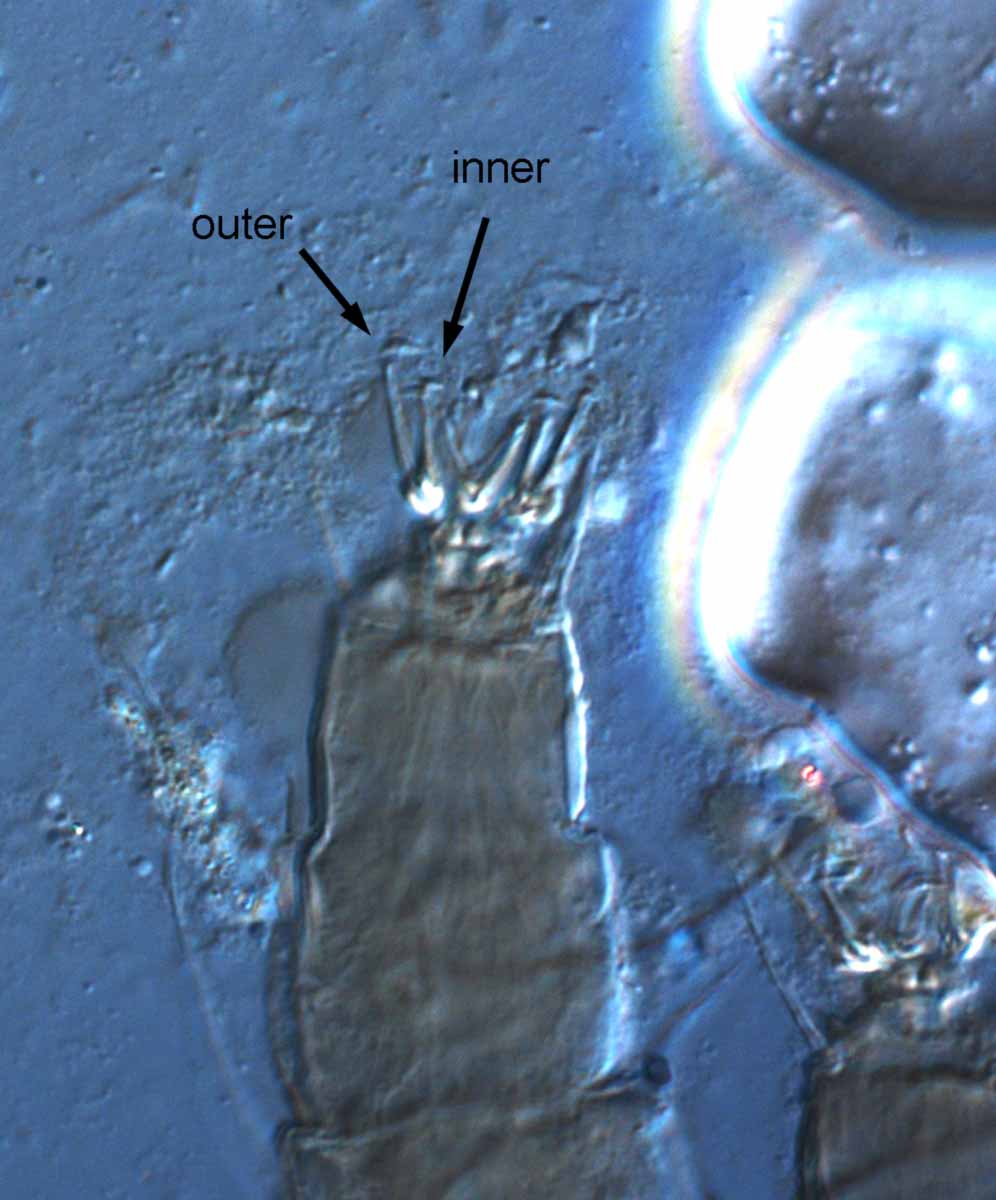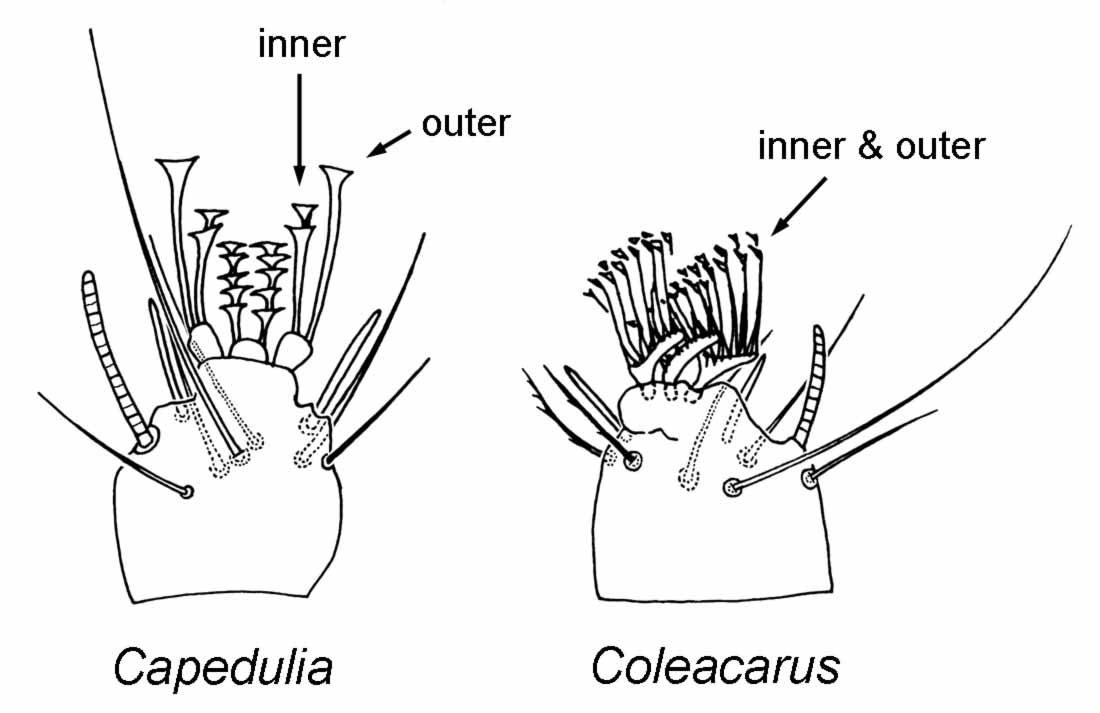Coleacarus
|
Fig. 1. Coleacarus lithops female dorsum (after Meyer 1979). |
|
Fig. 2. Coleacarus lithops female dorsum. |
|
Fig. 3. Coleacarus lithops female anterior opisthosoma. |
|
Fig. 4. Coleacarus lithops female posterior dorsum. |
|
Fig. 5. Coleacarus lithops female prodorsum. |
|
Fig. 6. Coleacarus lithops female posterior venter. |
|
Fig. 7. Coleacarus lithops female tarsus IV. |
|
Fig. 8. Coleacarus lithops female tarsus I. |
|
Fig. 9. Coleacarus and Capedulia tarsus - tenent hairs on claws. |
Key characters
- d2, e2, f2 absent (Figs. 1-4)
- h2
not much more elongate than other dorsal setae (Fig. 4) - prodorsum shield evident
- anterior margin of prodorsum smoothly rounded, without notch or projection (Fig. 5)
- ventral, genital and anal plates not developed (Fig. 6)
- 2 pairs ps setae
- 2 segmented palp
- claws are pad-like and resemble empodium
- inner and outer tenent hairs on claws are equal in length (Figs. 7-9)
Similar taxa
Capedulia - inner tenent hairs on the claws are shorter than outer tenent hairs (Fig. 9)
Number of species
One - C. lithops
Authority
Meyer
Distribution
Namibia
Hosts
Lithops erniana (Aizoaceae)

